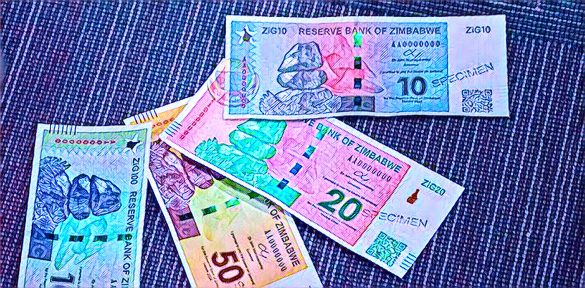Finance Minister Mthuli Ncube revealed that Zimbabwe is going to restructure its financial system by transferring its annual budget into the ZiG, the country’s new, gold-backed currency, which went into effect recently. This calculated action is a part of the ongoing endeavor to use a stable indigenous currency to stabilize the economy of the country.
The country has made six attempts since 2008 to create a stable currency and abandon the fast declining Zimbabwean dollar, with the current move to the ZiG, short for Zimbabwe Gold. The Zimbabwean dollar has significantly weakened versus the US dollar this year alone, which has made budgeting and financial planning extremely difficult for the government.
Finance Minister Mthuli Ncube, addressing lawmakers in the nation’s parliament in Mount Hampden, stated that the government plans to reveal the ZiG equivalent of the budget by the end of the current month or early next month. “That should be ready at the end of the month, beginning of next month we will be able to show you the ZiG equivalent of the budget,” Ncube explained.
The adoption of the ZiG comes after its April 5 launch. The hope has been that the currency’s backing by gold reserves will provide more stability and legitimacy than its predecessors, therefore it has been gradually being used since then. ZiG’s implementation is viewed as a crucial first step in resolving Zimbabwe’s long-standing fiscal and economic problems.
During his speech, Ncube emphasized the importance of a reliable exchange rate for the new currency. “This is an exchange-rate translation at the end of the day. It’s just moving from one currency to another,” he said. He stressed the necessity of using a market-aligned exchange rate to ensure that the revenues and expenditures in the budget reflect realistic economic conditions.
The budget for the current year, presented in December, had projected expenditures at 58.2 trillion Zimbabwean dollars and tax revenues at 51.2 trillion Zimbabwean dollars. The transition to the ZiG is expected to require meticulous recalculations to ensure these figures are accurately represented in the new currency, ensuring that government spending and income are properly aligned with the new economic realities.
The Reserve Bank of Zimbabwe said that as of the most recent statistics, the ZiG was trading at 13.67 to the US dollar, indicating a little depreciation from 13.56 on April 8. This volatility underscores the constant modifications and market responses as the currency starts to become more widely used.
This currency change is a component of Zimbabwe’s larger plan to recover control over its monetary policy and economic stability, both of which have been severely disrupted over the previous few decades by hyperinflation and currency volatility. Zimbabwe hopes to boost confidence among investors and the public by tying the new currency to gold, which could result in a more secure and prosperous economic climate.


